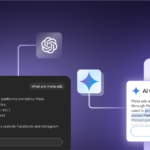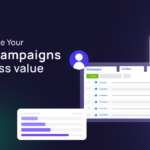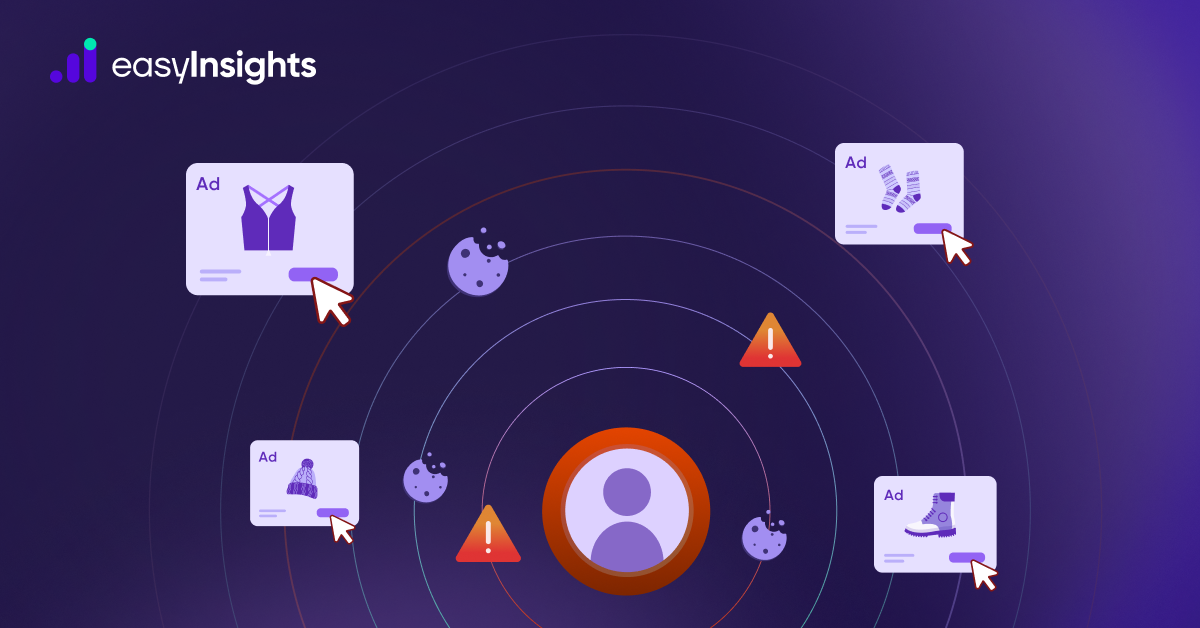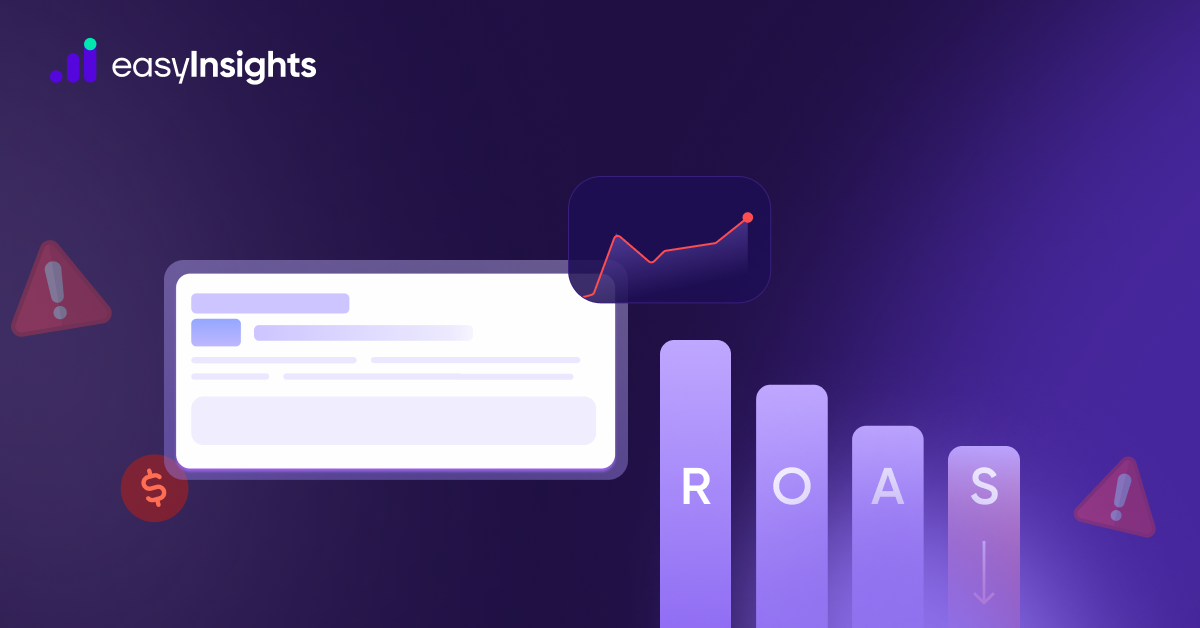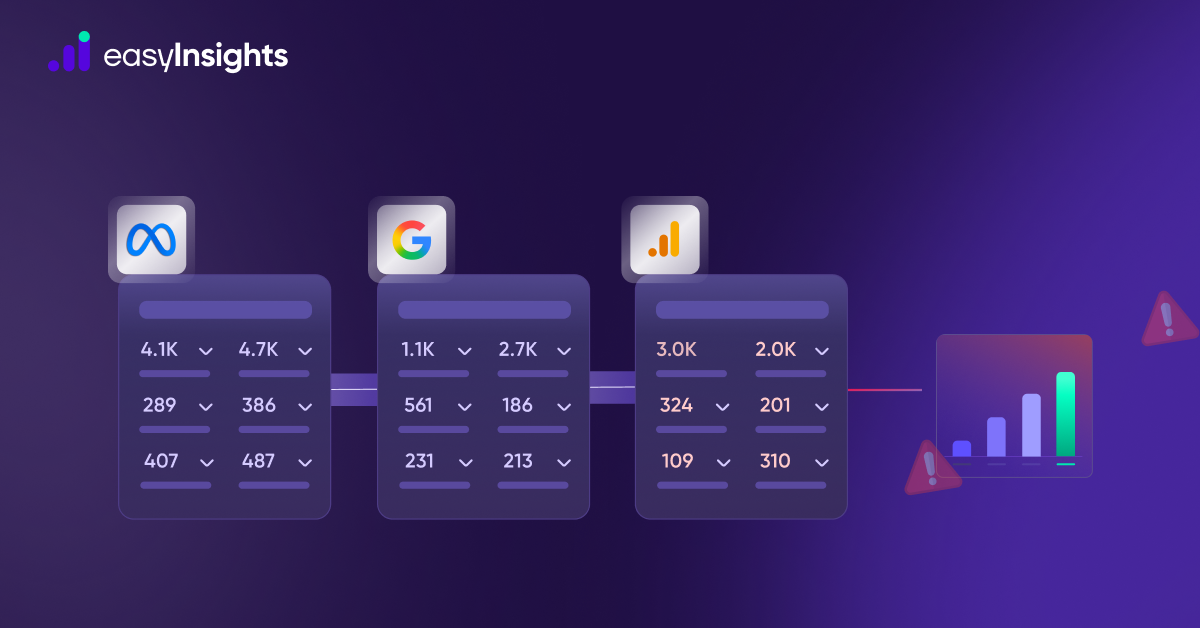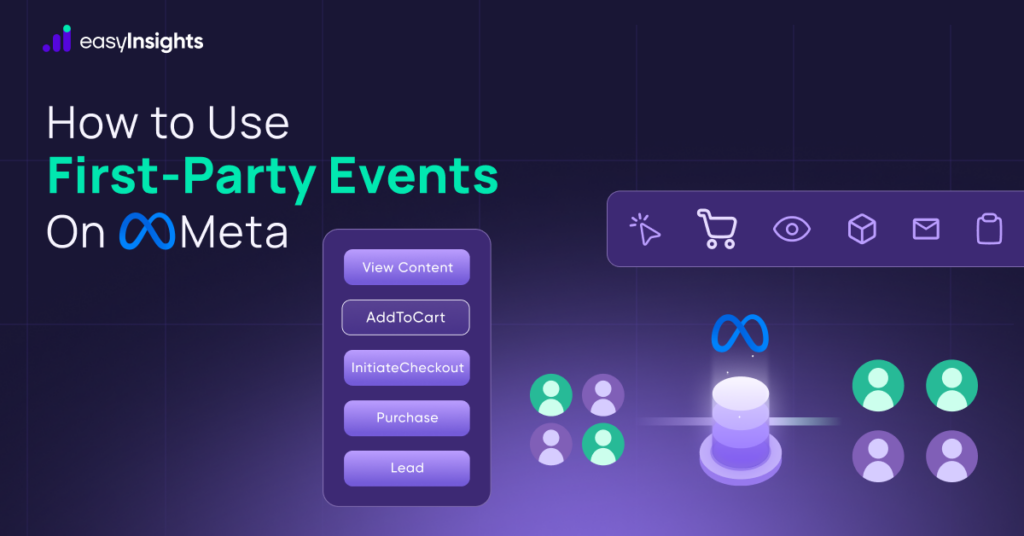
The digital advertising landscape has changed dramatically over the past few years. Between iOS14 updates, third-party cookie deprecation, and increasing privacy regulations (GDPR, CCPA), marketers are losing visibility into their customers’ journeys.
For performance marketers, this means less accurate tracking, broken attribution, and inefficient ad spend. But there’s a solution: first-party events.
By using first-party events across platforms like Meta and Google, you can regain visibility, improve optimization, and future-proof your marketing.
Jump ahead to:
What Are First-Party Events?
First-party events are user interactions (like purchases, sign-ups, or add-to-cart actions) that you collect directly from your own digital properties (website, app, CRM, POS system).
Unlike third-party cookies (set by outside domains), first-party data is:
- Owned by you – You have full control.
- Compliant – Fits into the new privacy-first marketing landscape.
- Reliable – Not blocked by browsers like Safari or regulations like iOS App Tracking Transparency.
Examples of First-Party Events:
- A visitor submits a lead form on your website.
- A user adds a product to their cart.
- A subscriber renews their plan in your SaaS app.
- A customer purchases offline, and you log it in your CRM.
Every one of these events can be passed to platforms like Meta and Google, allowing their ad algorithms to optimize campaigns with richer, verified data.
Why First-Party Events Matter in Advertising
Here’s why every performance marketer should prioritize first-party event tracking:
- More Accurate Attribution – Meta and Google rely on event data to assign credit for conversions. First-party events reduce signal loss and give you a clearer picture of what’s actually driving results.
- Better Campaign Optimization – The more data you feed Meta/Google, the better their algorithms learn. Passing server-side events helps ad platforms understand which users are most valuable.
- Reduced CAC, Increased ROAS – With high-quality event data, platforms avoid wasted impressions on low-quality audiences – helping you scale profitably.
- Resilience Against Browser Limitations – Safari, Firefox, and iOS restrict third-party cookies. First-party events, especially server-side, bypass these limitations.
- Privacy Compliance – First-party events align with GDPR/CCPA since you’re using data collected directly with user consent.
Using First-Party Events on Meta
Meta now emphasizes first-party tracking (via its Pixel and Conversions API) as browsers block third-party cookies. In practice, you should install the Meta Pixel and enable it to use first-party cookies, and also send key events from your server using Meta’s Conversions API.
This hybrid approach ensures more complete data: The Pixel captures browser-based events (pageviews, clicks, etc.), and CAPI captures server-side events (even if adblockers or browser privacy settings would block the Pixel)
Meta Pixel (First-Party Mode)
- Install the Meta Pixel on your website/app and enable first-party cookies.
- In Events Manager, go to Data Sources > Your Pixel > Settings, then under Cookie Usage turn on first-party cookies
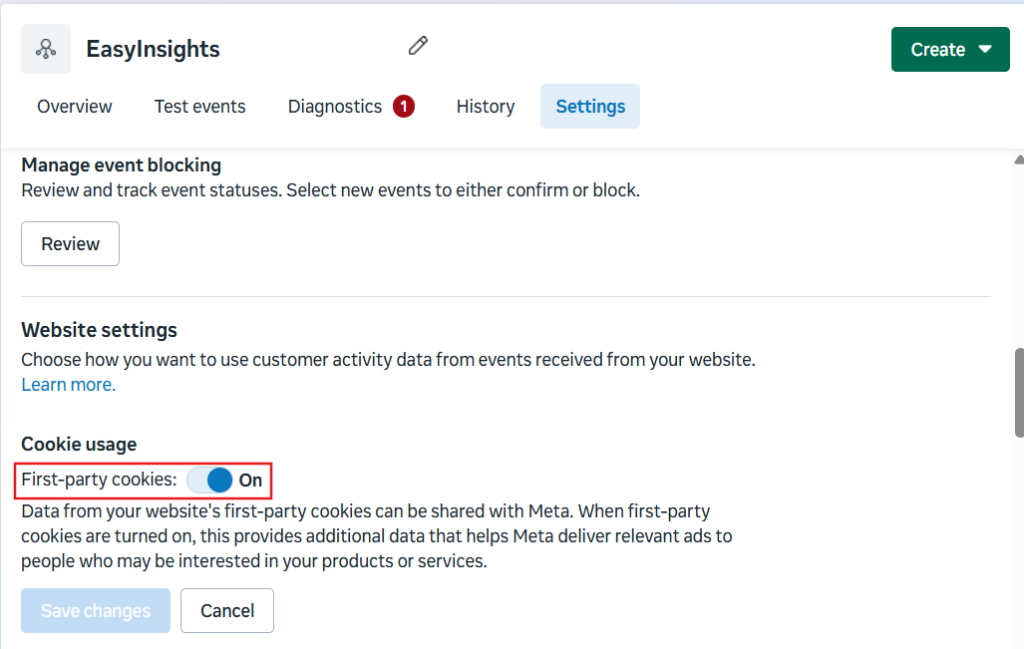
- First-party cookies are not blocked by Chrome/Safari, so this preserves the Pixel’s signals as third-party cookies are phased out
- Track standard events: Configure the Pixel to fire on key actions:
- ViewContent
- AddToCart
- InitiateCheckout
- Purchase
- Lead
These events tell Meta when users view products, add to cart, register, or complete checkout.
Meta Conversions API (CAPI)
Implement the Conversions API. The Pixel alone may miss conversions if users block scripts or leave the page too quickly
CAPI lets your server send the same events directly to Meta’s servers. For example, you can configure your backend (or a cloud server) to send a Purchase event to Meta whenever an order completes, parallel to the browser Pixel event
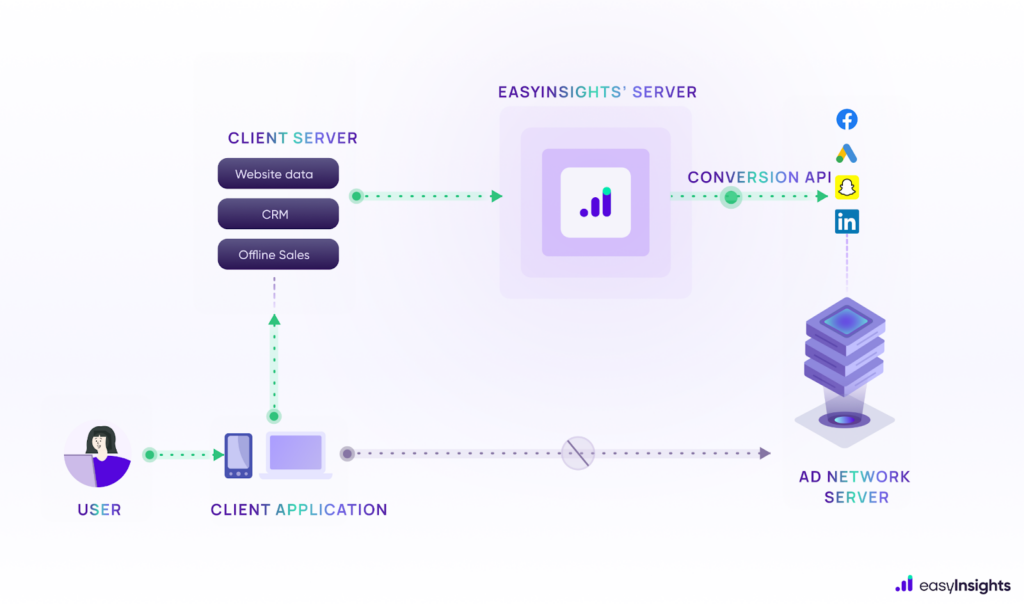
Capture additional events server-side. Beyond duplicating Pixel events, CAPI can send events that never hit the browser: e.g. form submissions, subscription sign-ups, or offline purchases logged in your CRM/point-of-sale. Meta explicitly recommends sending conversions from both web and CRM: you might configure “CAPI for CRM” to forward offline sales or leads into Meta
Deduplicate Pixel and server events. When firing the same event via Pixel and CAPI (e.g. a completed purchase), assign a shared unique event_id to both. Meta then knows these are duplicates and will count the conversion only once
Proper deduplication is crucial: without it, Meta might double-count conversions or discard one version. In practice, include the same event_id, event name, and timestamp in your Pixel and CAPI calls so Meta merges them into a single conversion
Boosting Event Match Quality (EMQ)
Include rich identifiers. Meta’s Event Match Quality (EMQ) score reflects how well your events can be tied to actual user profiles. To maximize EMQ, send as many hashed customer identifiers as possible with each event. Typical identifiers include the user’s email address, phone number, name, and location (city, ZIP code, etc.)

Add browser and network signals. In addition to personal data, include Meta-specific cookies (_fbp, _fbc) and other signals if available. For example, when using CAPI you can grab the _fbp cookie (Facebook click ID) or the user’s IP address from the web request and send those in the event. These further improve matching accuracy.
Aim for high match quality. Meta treats EMQ as a diagnostic: lower scores can hurt attribution and targeting. Industry sources suggest aiming for an EMQ of ~6–8/10 or above for key events.
Higher EMQ leads to better ad optimization and more accurate ROAS. As one guide notes, “high-quality, accurately hashed user data will result in a better EMQ” and thus stronger campaign performance
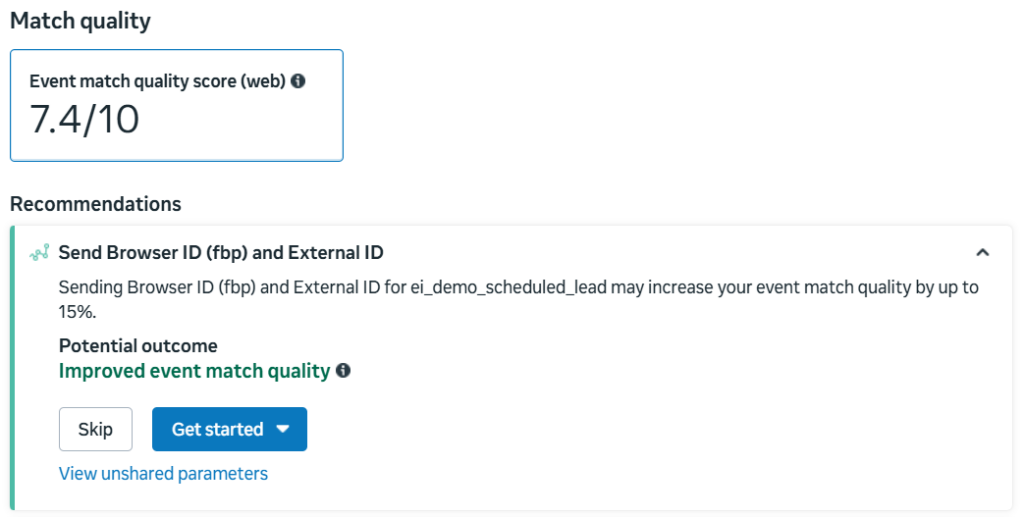
Additional reading: How to improve event match quality with first-party data
Go Beyond Standard Events with EasyInsight’s Custom Event Tracking
Advanced, business-contextual events go far beyond default Meta actions like Purchase or AddToCart. When powered through EasyInsights and sent via Meta Conversions API (CAPI) or Google Enhanced Conversions, these custom first-party events unlock a whole new level of optimization. They let you target high-value users, behavior-based cohorts, and retention metrics that standard pixel tracking often misses.
To make it easier, we’ve curated a list of impactful custom events – complete with suggested names, purposes, and implementation triggers – that you can tailor to your unique business needs.
A few most used events in B2B/Lead Generation:
- New lead
- Qualified lead
- High value lead
- Lead scored
A few most used events in B2B/Lead Generation:
- NewCustomerPurchase
- PrepaidOrder
- FulfilledOrder
- ReturnOrder
Conclusion
The shift toward first-party events isn’t just a technical adjustment – it’s a strategic edge. Platforms like Meta and Google are rewarding advertisers who provide richer, more trustworthy data. That means the brands that take control of their own event tracking today will be the ones who scale profitably tomorrow.
Whether you’re running ecommerce campaigns, generating leads, or driving retention in SaaS, the message is clear: your first-party events are the fuel that powers smarter algorithms and stronger results. Marketers who embrace this approach won’t just survive the cookieless era – they’ll outpace competitors still clinging to legacy tracking methods.
Book a demo with EasyInsights to start tracking custom events.


